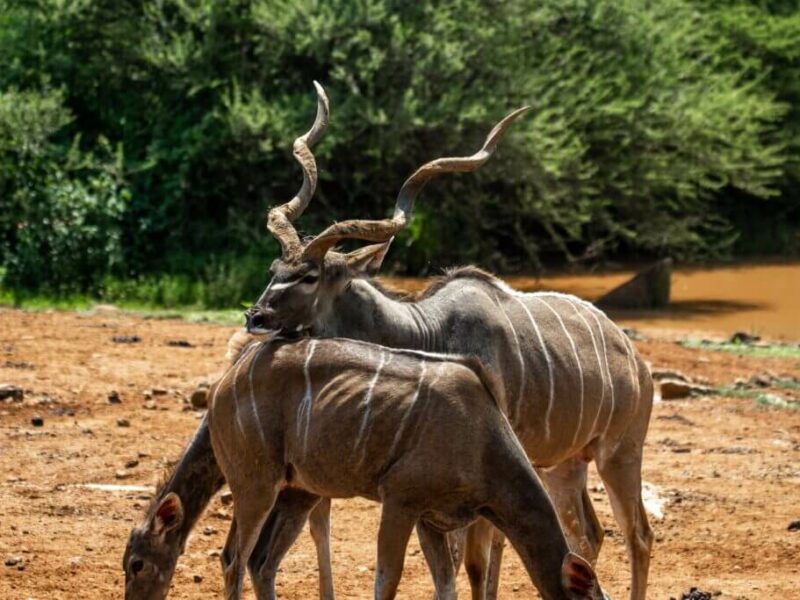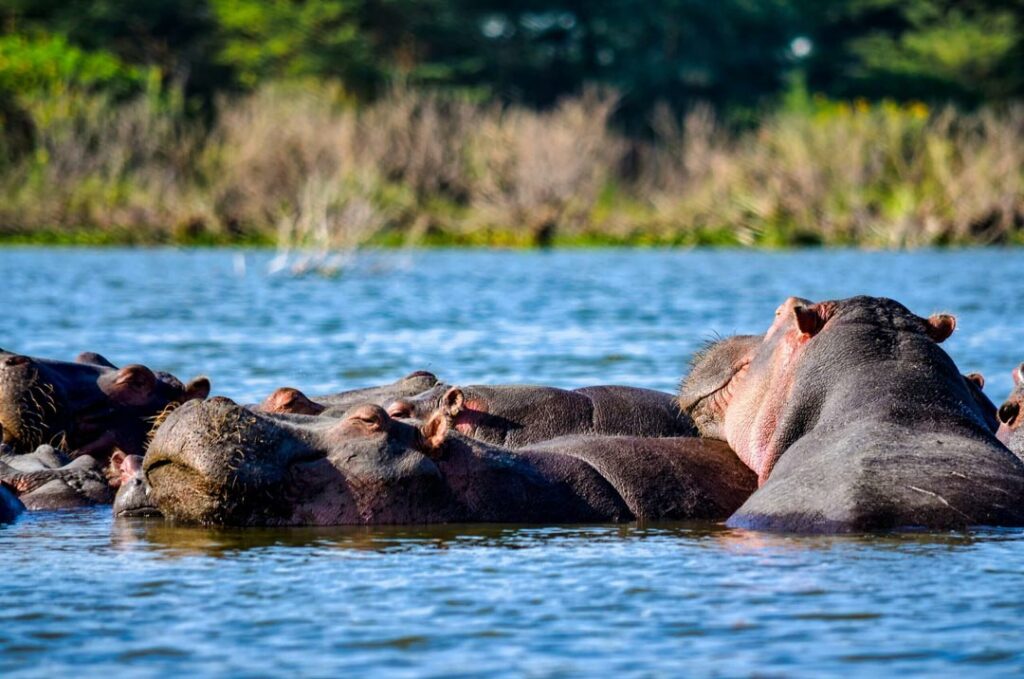Mozambique is a top destination to book your big game hunting safari, and offers six of the Dangerous 7 animals. The only species not offered while hunting in Mozambique are the white rhino (also known as the square-lipped rhino), and the black rhino.
Mozambique is a former Portuguese colony that gained its independence in 1975 and today remains undeveloped and is still untamed and wild. The country is often described as “old Africa” and is open for trophy hunters and other game hunting safaris. Hunting in Mozambique is characterized by vast open territories from woodlands, swamplands, and mountains to open savannahs. Mozambique hunting outfitters are world-class and seasoned professionals in big game hunting. Whilst traveling to the remotest parts of dark Africa, these outfitters understand the job and how to manage and guide international big game hunters.
[DYNAMIC-BLOGTABLEOFCONTENT]
Mozambique is a long and thin country with thousands of miles of coastline on the Indian Ocean. It is surrounded by Tanzania to the north, Zambia, Zimbabwe, Malawi to the west, and South Africa connecting its southern border. The country is about the combined size of the US States of Colorado, New Mexico, and Utah. In square miles, this is 309,475, perfect for any big game African adventure.
Mozambique is a very scenic African country with a tropical climate, and is rich in natural resources. The country’s turbulent political history of civil war has prevented its people from taking full advantage of these natural advantages. Mozambique boasts six national parks, eight reserves, and eleven coutadas.
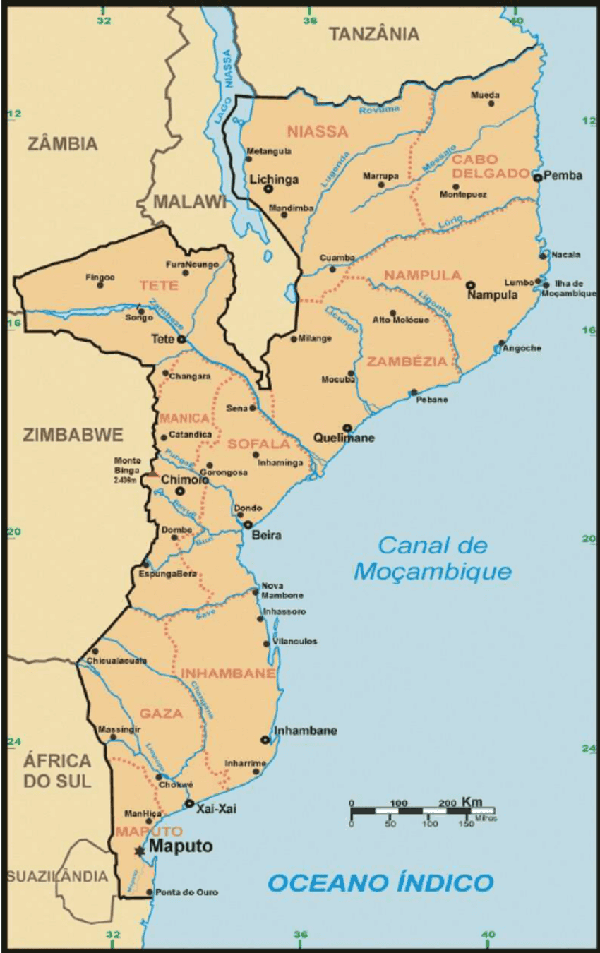
What is a Coutada?
A coutada is an official game hunting safari concession designated for sustainable wildlife utilization. The southern regions of the Zambezi River, and the Niassa region in northern Mozambique are famous game hunting areas. Lake Cahora Basa is also a firm favorite.
Mozambique offers hunters a variety of African plains game and dangerous game hunting options throughout the country. When booking your game hunting safari, due to Mozambique’s size, it is advisable to check which animals are endemic to specific areas.
| Dangerous Game | Large Antelope | Small / Medium | Speciality |
| Cape Buffalo | Rooselvelt Sable | Chobe Bushbuck | Bushpig |
| Lion | Livingston Eland | Nyala | Spotted Hyena |
| Leopard | Waterbuck | Reedbuck | Warthog |
| Crocodile | Kudu | Oribi | Bhoms Zebra |
| Hippo | Niassa Wildebeest | Grey Duiker | Baboon |
| Elephant | Red Duiker | ||
| Grysbuck | |||
| Impala |
Mozambique Hunting Camps
Big game hunting camps in Mozambique are typically permanent structures built from natural resources with thatched bungalows and plenty of tasty food. These bungalows have flushing toilets, running water, and hot showers. Air conditioning is not a standard feature, due to the remote areas of the game hunting blocks. Check with your outfitter whether cell phone signal and data services are available in the game hunting area, should you require it. Very often, transmission is only possible with satellite links and phones.
Hunting Areas in Mozambique
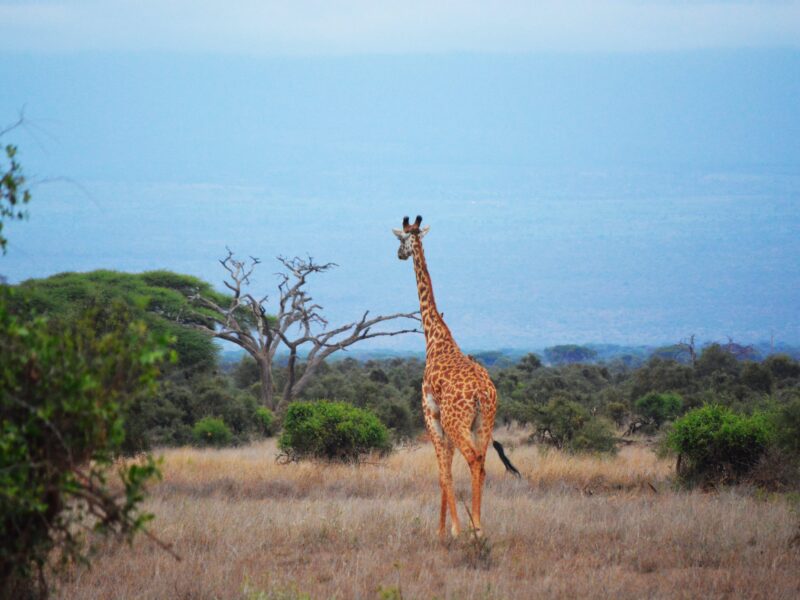
Gorogoza / Zambezi River Region
This hunting area is inland, stretching down the Zambezi River flood plains and to the northwest of the Gorongoza National Park. This area was affected by civil war that saw a material reduction in buffalo numbers. Habitat consists of flood plains, swamps, tropical savannah, and woodlands. Here you will find Coutadas 7,9, and 13.
Niassa Region
It is untouched, unspoiled, and is similar in size to the Kruger National Park in South Africa. This prime big game hunting area lies to the north and borders Tanzania. It is famously known for the Niassa Wildebeest. It is one of the most dangerous African game hunting destinations, famous for lions, elephants, and leopards.
It is one of the most sparsely populated provinces in Mozambique. It would not be correct to assume that these game animals have all encountered humans before, making it the proverbial game hunting paradise.
Marromeu Complex
This complex includes Coutadas 10, 11, 12, and 14. This region is home to the Zambezi Delta, swamp lands, and sand forests. Conservative efforts are in place for anti-poaching and community upliftment projects. Cape buffalo numbers in the region are more than 12,000.
Tete Region / Cahora Bassa
Lake Cahora Basa is the fourth largest manmade lake in Africa, boasting incredible numbers of Nile crocodiles and hippos. The lake is in western Mozambique, surrounded by the Mopane and Baobab rolling hills. Its capacity is more than eighty billion cubic feet of water, navigable to its confluence with the Luangwa River. This lake is also commercially fished for Kapenta, also known as “lake sardines” or “white bait.” The lake is famous for its man-eating crocodiles that regularly exceed 16 feet!
Greater Lebombo Conservancy
This conversancy is an area of over 4,500 square miles and is currently the key area worldwide for the conservation of rhinos. It sadly also has the highest concentration of rhino poaching syndicates. The Mozambique National AGENCY FOR Conservation (ANAC) is working closely with the International ANTI-Poaching Foundation (IAPF) to implement an effective strategy. The area is a multi-use ecotourism destination, and big game hunting is a top contributor towards conservation and sustainably utilizing resources.
Chimanimani National Reserve/Zinave National Park
During the many years of civil war, poaching destroyed the African game animals, and currently, there are restocking programs in place at Zinanve National Park. Neighboring countries have donated a variety of species, including elephant, giraffes, eland, Cape buffalo, blue wildebeest, and have committed to continue for the near future. The total cost of restocking will exceed US $12 million and include more than 5,000 game animals. Zinanve is in Mozambique’s southern province of Inhambane.
When to Hunt Big Game in Mozambique
Climate and Game Hunting Season
Mozambique experiences two seasons:
- A cool and dry season from April to September
- A hot and humid spring and summer, from October to March
- Near the coast and lowland regions, temperatures are higher than in the inland regions.
- Periodic droughts can occur in the central-western and south-western regions.
- The high-altitude areas in the north of Mozambique receive an average rainfall of 1000mm per annum. The southern regions are drier, with an average rainfall of 31.5-inches per annum.
- The best time to hunt big game in Mozambique will be in the dry months and may extend to November, depending on the big game species.
- During the warmer months, enjoy some big game fishing. Giant tiger fish are a favorite species for freshwater, and deep-sea salt fishing offers a variety of sport fishing options.
Popular Species to Hunt in Mozambique
Elephant Hunting in Mozambique
- Elephants are hunted on foot in Mozambique using the walk and stalk method. When fresh spoor are found, the professional hunter and his team will make a call to check if the tracks are a big bull worth following.
- Hunters often walk for days only to come upon the elephant and find one tusk broken or small on the ivory side.
- The African elephant is not endangered and overpopulated in many African countries.
- The hunter needs to be in good physical shape. As the saying goes, a mile for every pound of ivory.
- Elephant hunting in Mozambique will test your nerves, skills, and endurance.
- Shot placement on this mighty beast is critical.
- A minimum legal caliber of .375 is a legal requirement. I would say that when elephant hunting, the hunter should use the largest caliber rifle with which he is comfortable.
- The laws concerning ivory import and export are ever-changing, and the hunter must apply for a CITES permit and various licenses.
- Ivory measurement is by weight.
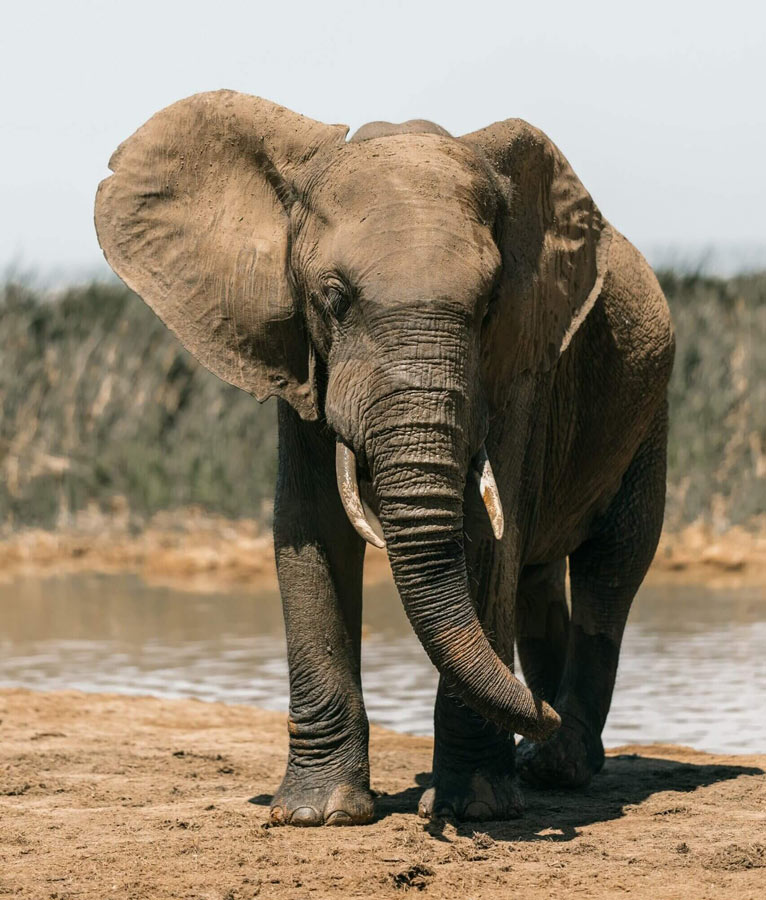
Hunting Crocodile in Mozambique
- Lake Cahora Bassa is famous for its huge, man-eating crocodiles. I shot a big bull crocodile that measured 14.9 feet. My wife, Tamlyn, shot a bigger one, measuring 15.1 feet.
- Outfitters use a motorized deep-sea boat on the lake, due to the size of the swell in windy conditions.
- Once a big bull is spotted, the hunter will go ashore and stalk to within a 30-120 foot shooting distance.
- When hunting a crocodile in Mozambique, shot placement is critical when using a high-powered, very accurate rifle. I used a 300-win mag.
- The first shot smashed the spine, the second the brain, and the third the vitals. It is imperative to pin him down so that the crocodile cannot roll back into the water.
- This is not a physically demanding big game hunting safari.
Affordable, exciting, and wild!
Hunting in Mozambique is affordable, exciting, and truly wild Africa! It is recommended that when considering hunting in Africa, Mozambique is a top choice.I have visited Mozambique many times for leisure, big game hunting, and game fishing. The country is safe, affordable, and a place where everlasting memories are made. If this article has you considering a big game hunting safari in Mozambique, click here to see our big game hunting offers or contact us for more information.
Hunting Hippo in Mozambique
When planning a game hunting safari, and a hippo is your target species, remember that the hippo occupies the same waterways as the Nile crocodile. It may be worthwhile, budget depending, to add a crocodile.
Hippo hunts take place in most coutadas with rivers and swampy areas.
Shot placement will depend on the level of the water:
- Out of water, a well-placed shot a third of the way up on the shoulder will penetrate the massive heart.
- In the water, a brainshot will be required. From the front, it will be between the eyes, and from the side, between the ear and the eye.
In deep water, it can take three to five hours for your hippo to float to the surface. Local communities rely on this source of protein to feed their families. You are not only hunting hippos in Mozambique but feeding entire villages.
Hunting Lion in Mozambique
- Your professional hunter will bait for lions at multiple locations, waiting for a mature male to take the bait. The bait is secured to a tree to keep the lion from removing it.
- Lion hunting in Mozambique may be done at night using artificial light.
- Mozambique has imposed an age minimum on lions allowed to be hunted as trophies. The age limit has been set at six years to ensure that the lions are past breeding age to focus on sustainable hunting. It is, of course, challenging to age the lion as there are no standards.
- A .375 caliber is the minimum legal requirement when hunting lions. A Cape buffalo is also a good add-on when booking your game hunting safari, and Mozambique produces exceptional trophies.
Hunting Buffalo in Mozambique
- Many of the coutadas offer Cape Buffalo. Marromeu in the north produces some exceptional trophies. I have hunted that area, and the swamp lands and tall cut grass make it exceptionally challenging.
- During the dry season, hunters gain access using 4×4 vehicles. In the wet season a hunter can walk up to 15 miles a day. else in the wet it is walking on average about fifteen miles a day.
- Like with big game fishing, a good tip is to look out for birds circling above the buffalo. The terrain can be so flat and wet that it is almost impossible to identify fresh tracks. This, of course, depends on the season.
- While a nice balanced double works nicely on a buffalo, when it comes to buffalo hunting in Marromeu, I would recommend a .375 or a .458 mounted with a decent scope. The reality is that because the hunter may be shooting a target bull out of a herd, shooting distance may vary from sixty yards to two hundred yards. It is sometimes just impossible to get close.
- Following up on a wounded buffalo in this terrain certainly gets the heart pumping and the adrenaline rushing through your system.
Hunting Leopard in Mozambique
- Traditionally hunting leopard is done via baiting. The bait will usually be African plains game animals from a previous hunt or animals such as baboons. In some instances, even donkey meat gets used.
- A leopard hunting safari in Mozambique is 14-21 days.
- Hunting leopards making use of artificial light is allowed.
- As Mozambique offers such diversification in terms of plains game and depending on which coutada you are hunting on, adding selective species, such as the Niassa Wildebeest or Bhoms Zebra would be strongly suggested.
- Mozambique also offers a few members of the Tiny 10 antelopes.
- A .375 is the minimum legal requirement.
- Use a high-powered rifle with a decent scope. The professional hunter assisting will back you up with a caliber of .458 or bigger, else its best the hunter stays in camp.
African Plains Game Hunting in Mozambique
Big game hunting in Mozambique also includes some fantastic large antelope that fall into this category, such as sable, waterbuck, kudu, and Livingston eland which are highly sought-after trophies.
